India’s big cities are racing towards a sprawling homogeneity, devoid of history, culture and personality. Old cafés, storefronts and buildings — with their Art Deco, Indo-Saracenic, Gothic styles — are disappearing, often replaced by a big retail chain. It’s getting harder to find those elements that once differentiated a Delhi from a Mumbai, or a Kolkata from a Chennai.
While there are rules surrounding the preservation of old buildings and heritage structures in the country, they vary. The Ancient Monuments and Archaeological Sites and Remains Act of 1958, for instance, provides for the preservation of old and historical monuments, but it may not apply to the colonial building down the street. “There is a huge lack of awareness around old buildings and heritage structures in India,” says Nitin Kumar, a conservator with INTACH (Indian National Trust for Art and Cultural Heritage). “People like to have new things, but they forget: how can you build the new without the foundation of the old?”
Interestingly, Instagram is now becoming an archive of sorts. Urban sketchers are meticulously documenting streetscapes and architecture quintessential to their cities. Their motivations range from love for their cities to a nostalgic trip down memory lane. In the process, what’s being created is a living, evolving portrait of a city.
Tanay Kumar, 46
@tanz.arts, Mumbai
Tanay Kumar
“Architecture gives personality to neighbourhoods, ensuring you remember a place long after you’ve left it,” says Kumar, an architecture graduate who has been sketching his city since 2018. Take, for instance, the Ghadiyal Godi, a landmark in at Victoria Docks. “During British times, ships loaded with arms and gold came to the docks. Workers would go inside the godi [clock tower] to sign for the goods. Once, freedom fighters blasted a ship, and it was raining gold and fire. Along with the ship, the clock tower was destroyed,” he says. “Even today, you can feel this history, but the tower is so neglected. Why aren’t we celebrating it?” So, Kumar sketched the godi. Twice.
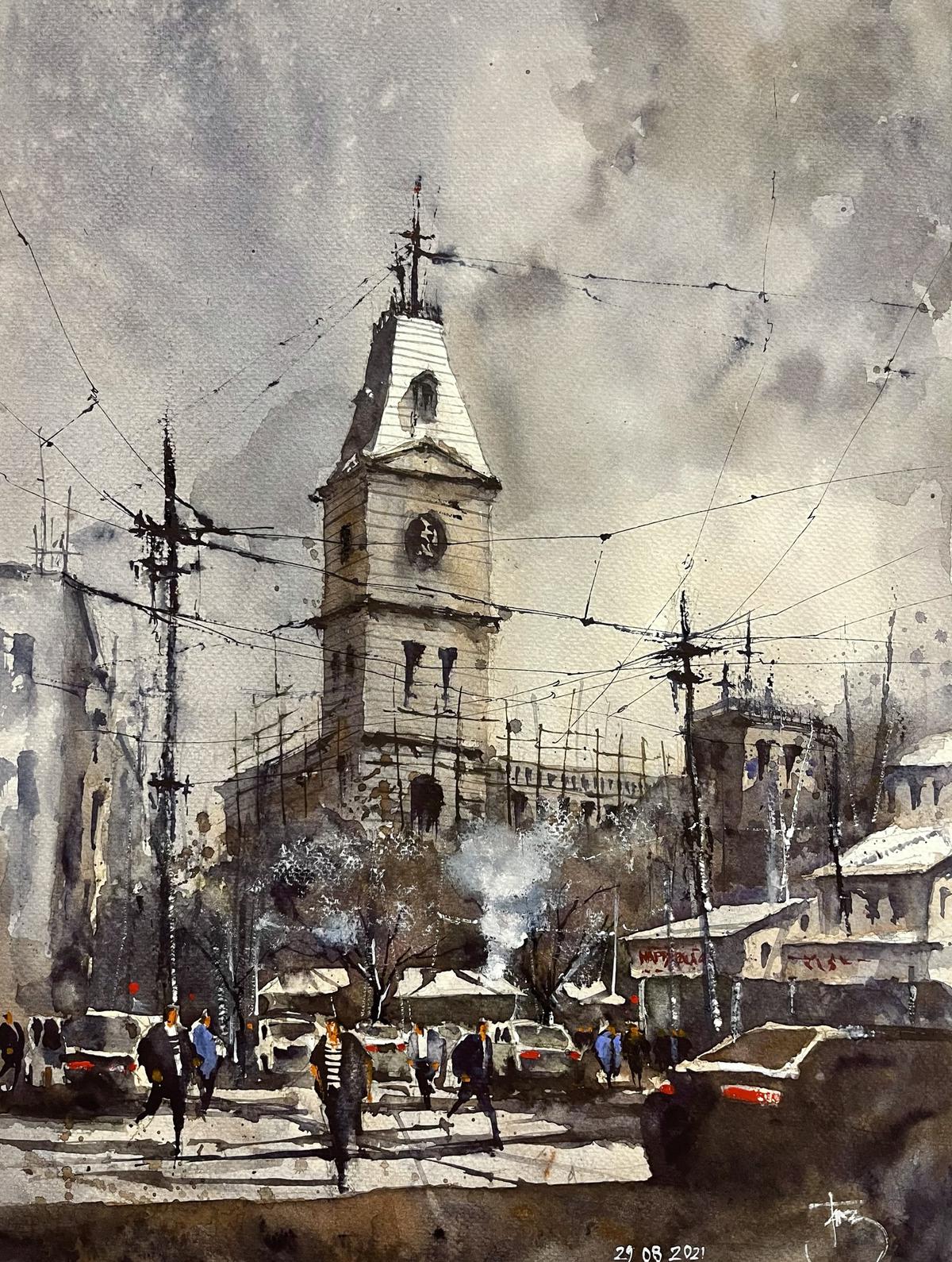
The Ghadiyal Godi
Mumbai has many such sites and stories. At the moment, Kumar is documenting 50 cafés of the city, including little known nooks such as Steps in Bandra, a narrow three-storey house that was converted into a café. “Everybody talks about the cafés of Paris, but Bombay is a city of cafés. Look at Bandra or Kala Ghoda. Each of the cafés have fabulous interiors, and are also a means of preserving the buildings.”
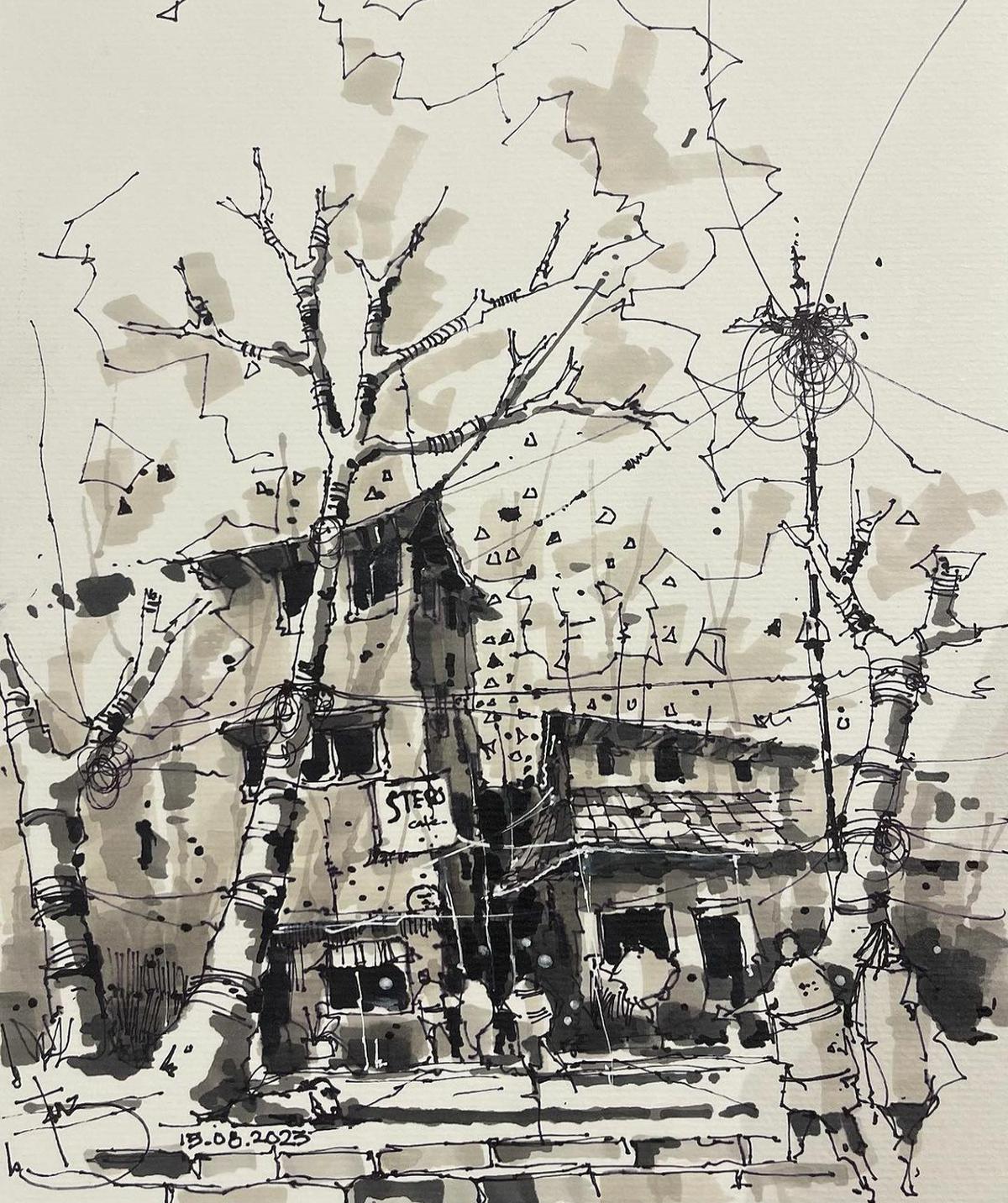
Steps café
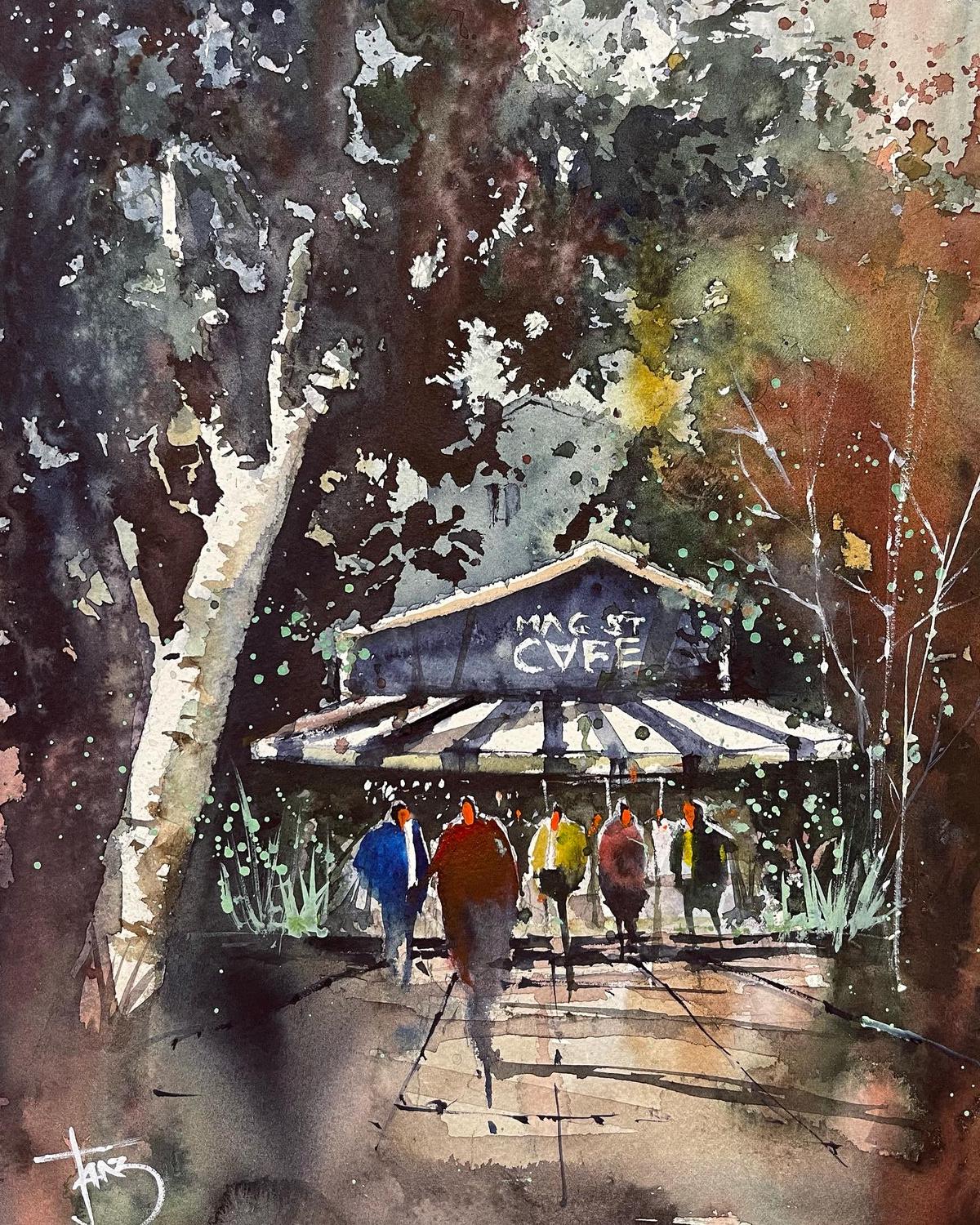
Mag St. Café
How does he pick his projects? Kumar always looks for a story. The kaali-peeli is his tribute to Mumbai’s Premier Padmini taxis that are being discontinued. “The story is not just in the buildings, but the whole atmosphere,” he says.
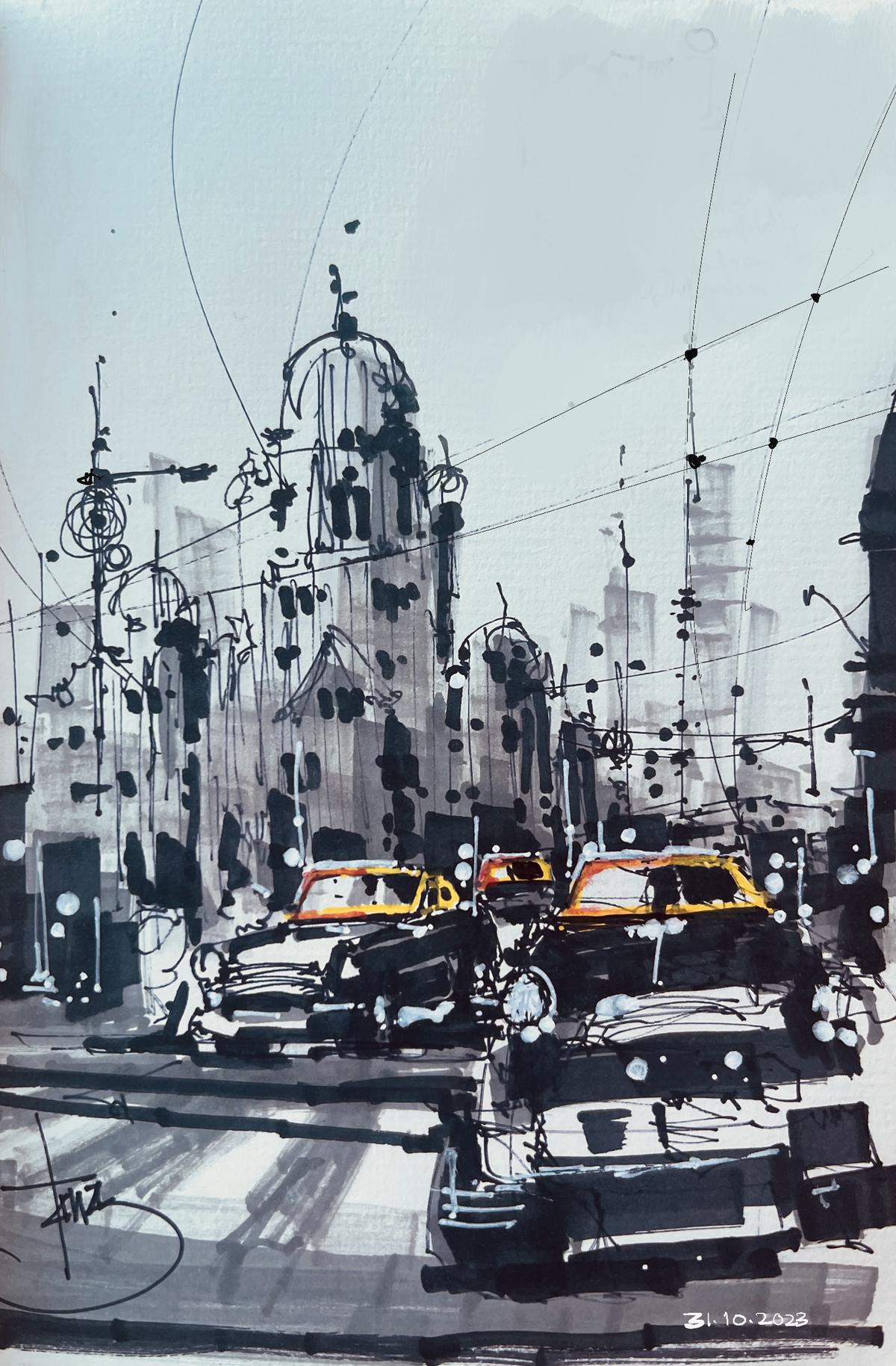
Mumbai’s kaali-peelis
“How do you differentiate Crawford Market from Bandra Fashion Street? They’re both crowded, but in Crawford Market, you’ll see people either walking or on cycles, whereas in fashion street, the crowd will be more hip and fashionable. That’s what I want to capture.” Kumar has exhibited his works around the world, from the London Art Biennale (2021) to Dubai World Art (2023), and usually sells for upwards of ₹25,000.
Varunika Gupta, 32
@madebyvarunika, California-Bengaluru
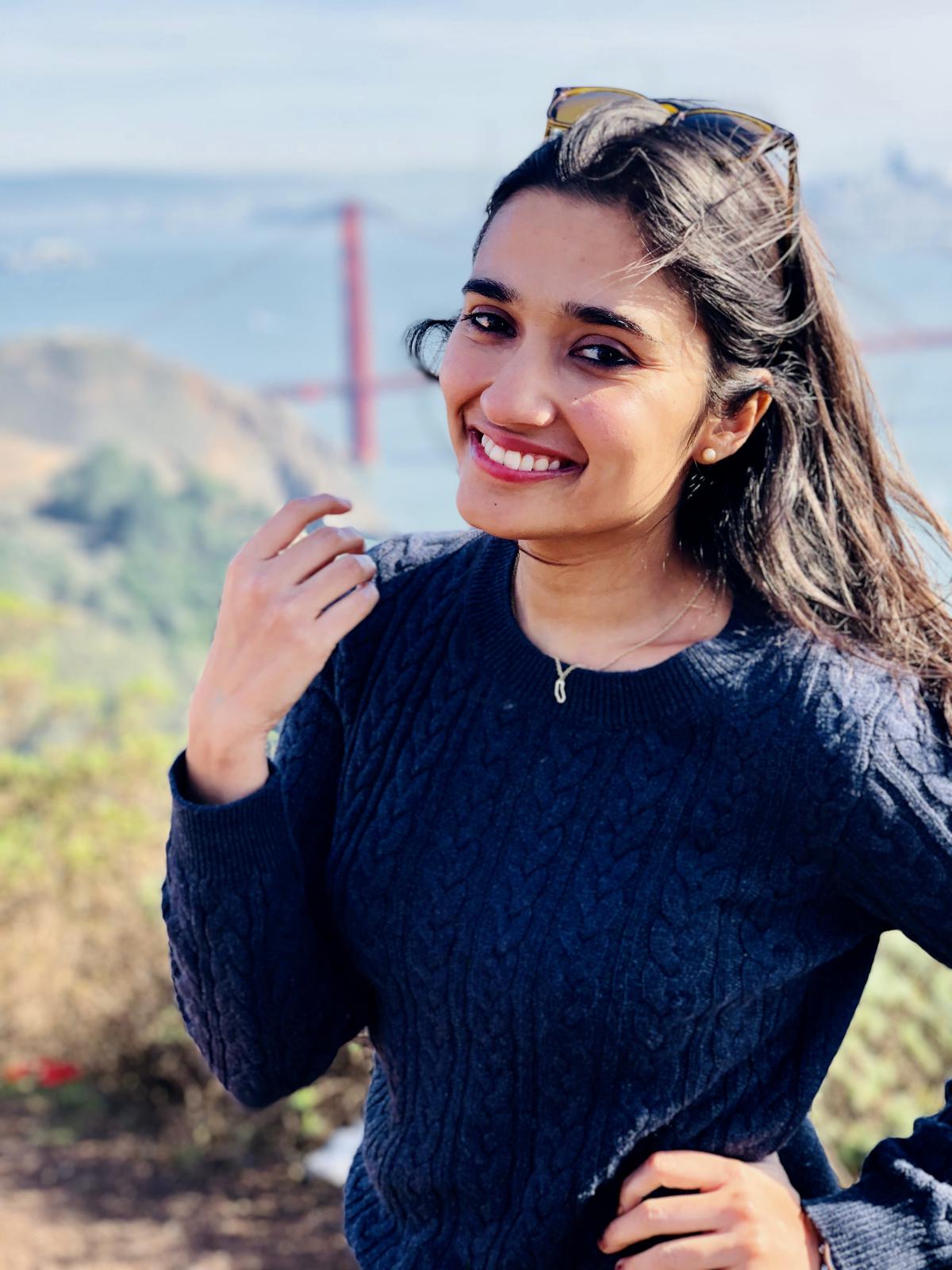
Varunika Gupta
Stuck in the U.S. during the pandemic, Gupta was missing her home in Bengaluru. That’s when the California-based artist started sketching. She found herself revisiting old storefronts, such as the Hot Chips shops, the little darshinis (self-service cafés) and bastions such as Vidyarthi Bhavan. She relied on her memory and, of course, Google maps and street views. Old photos and videos by food bloggers also helped.
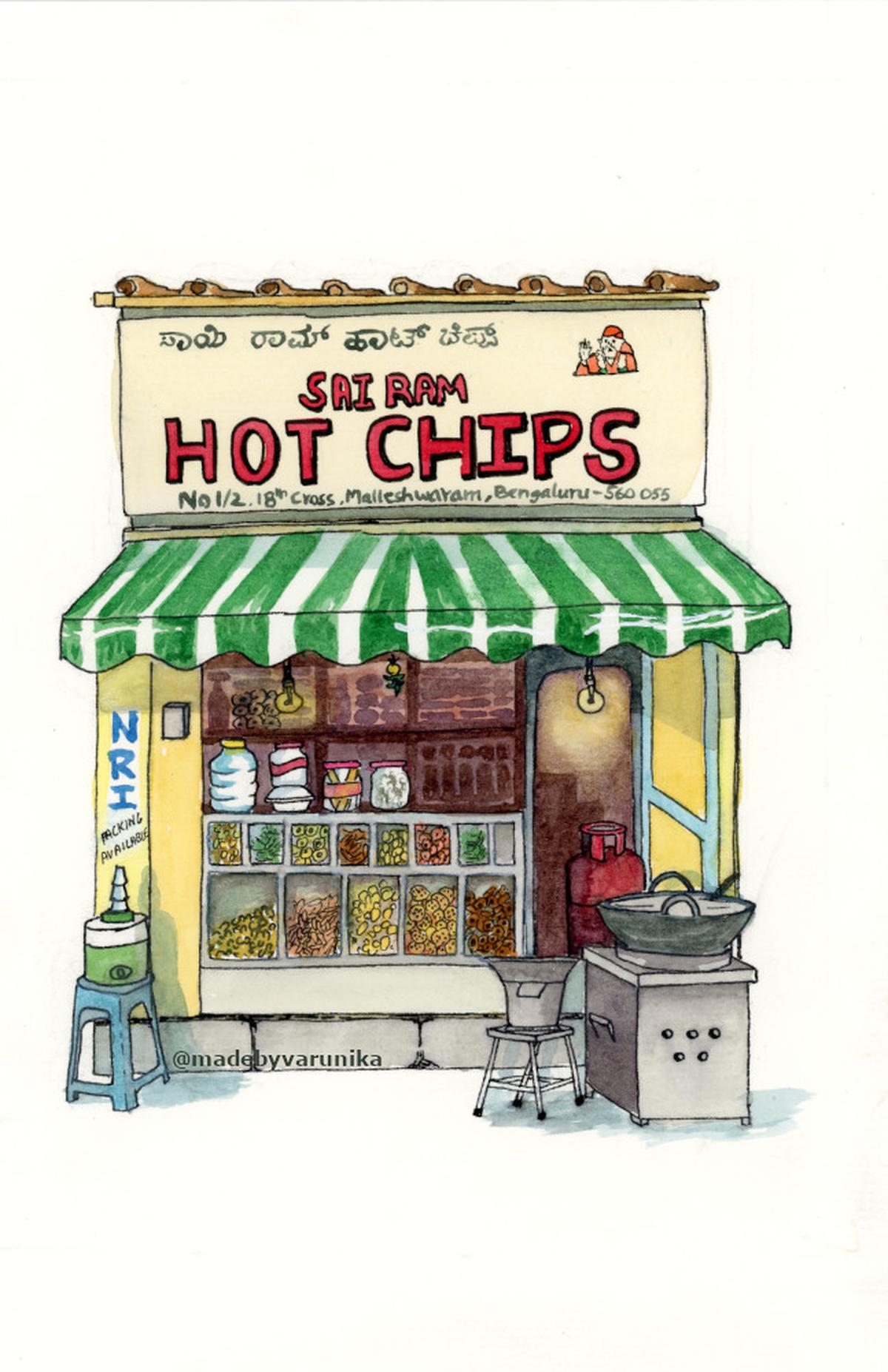
Hot Chips
“One of my first sketches was of this Hot Chips centre, which still means a lot to me,” she recalls. “After school, I’d go to AIEEE classes in Grades 11 and 12. You’d be so brain dead by the end of it. Right next to the tuition centre was the Hot Chips, and the guy would start making chips during our break. The aroma would fill our tuition centre and I couldn’t concentrate. My only aim was to get out and get myself a warm bag of potato chips.”
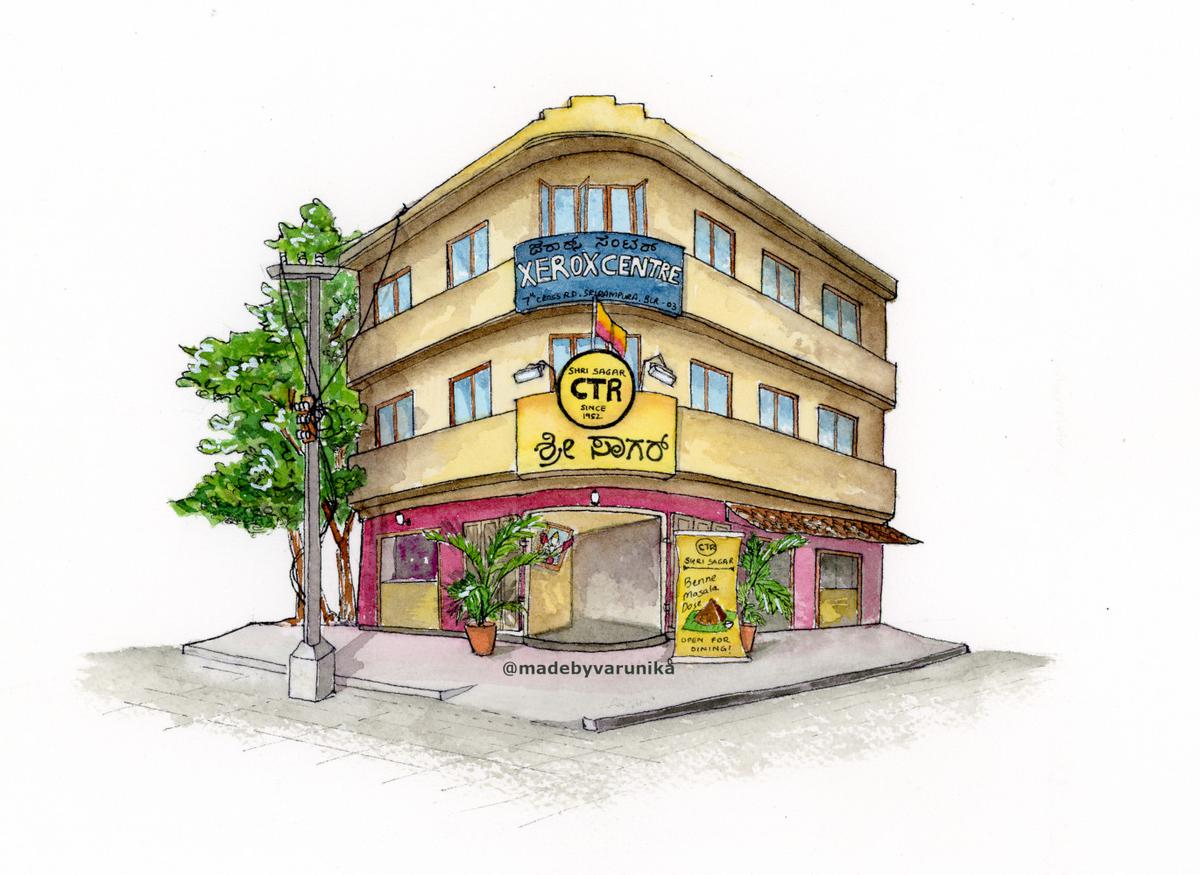
Central Tiffin Room
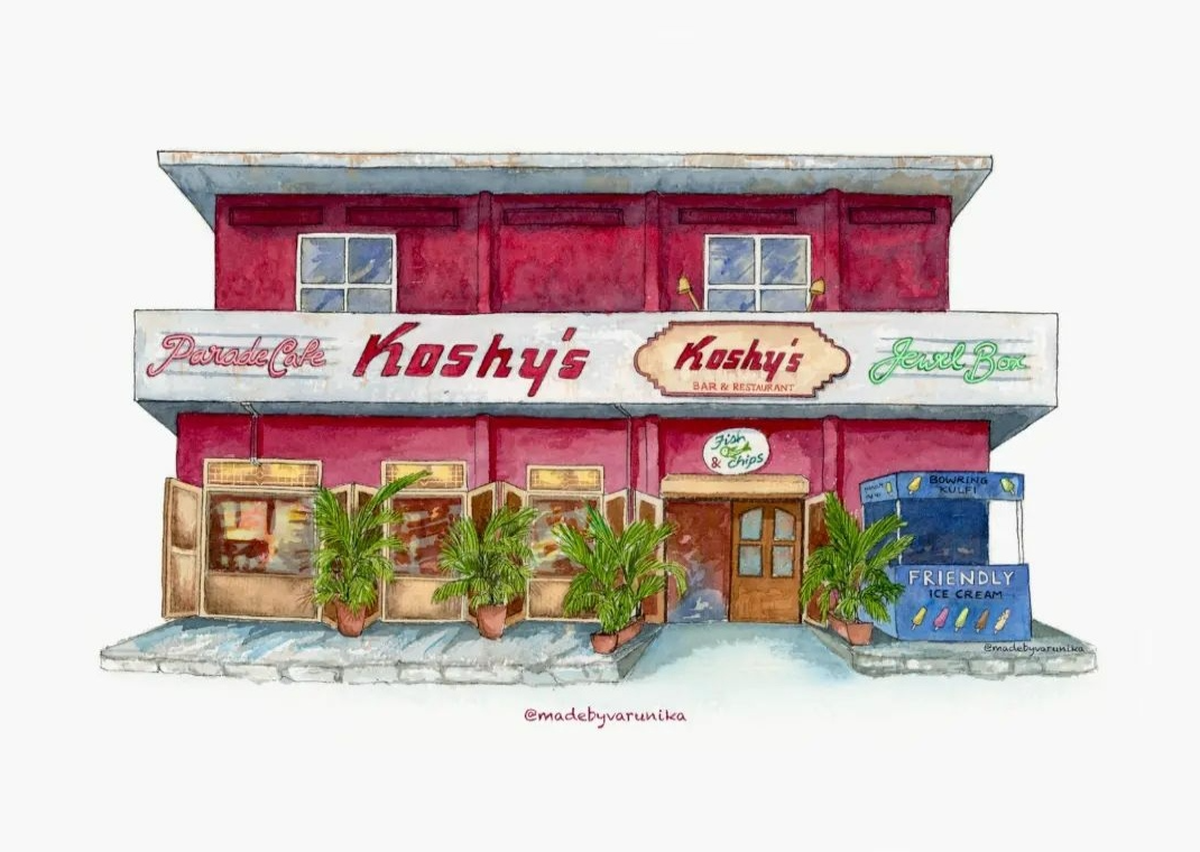
Koshy’s on St. Mark’s Road
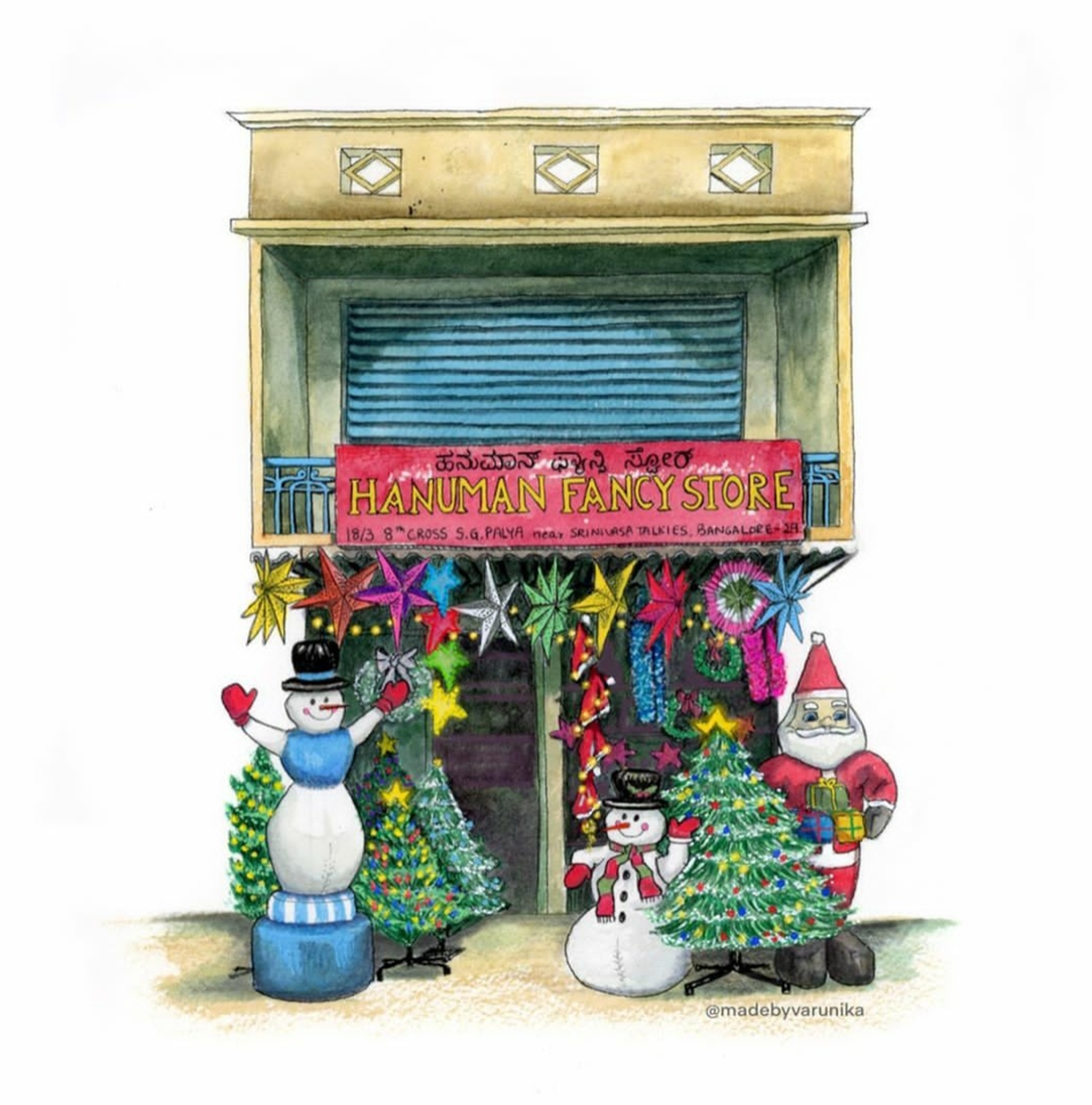
The fancy stores that stock everything
Sketching storefronts like these became her way of documenting memories. “Every morning, I’d spend a couple of hours sketching,” says Gupta, who also accepts the occasional commission. When she visited Bengaluru earlier this year, she noted that many of these familiar places had now either “got a facelift” or had disappeared altogether. It was sad, but as she says, it is natural. Some things change, others stay the same.
Aditya Raj, 32
@adirajart, Delhi
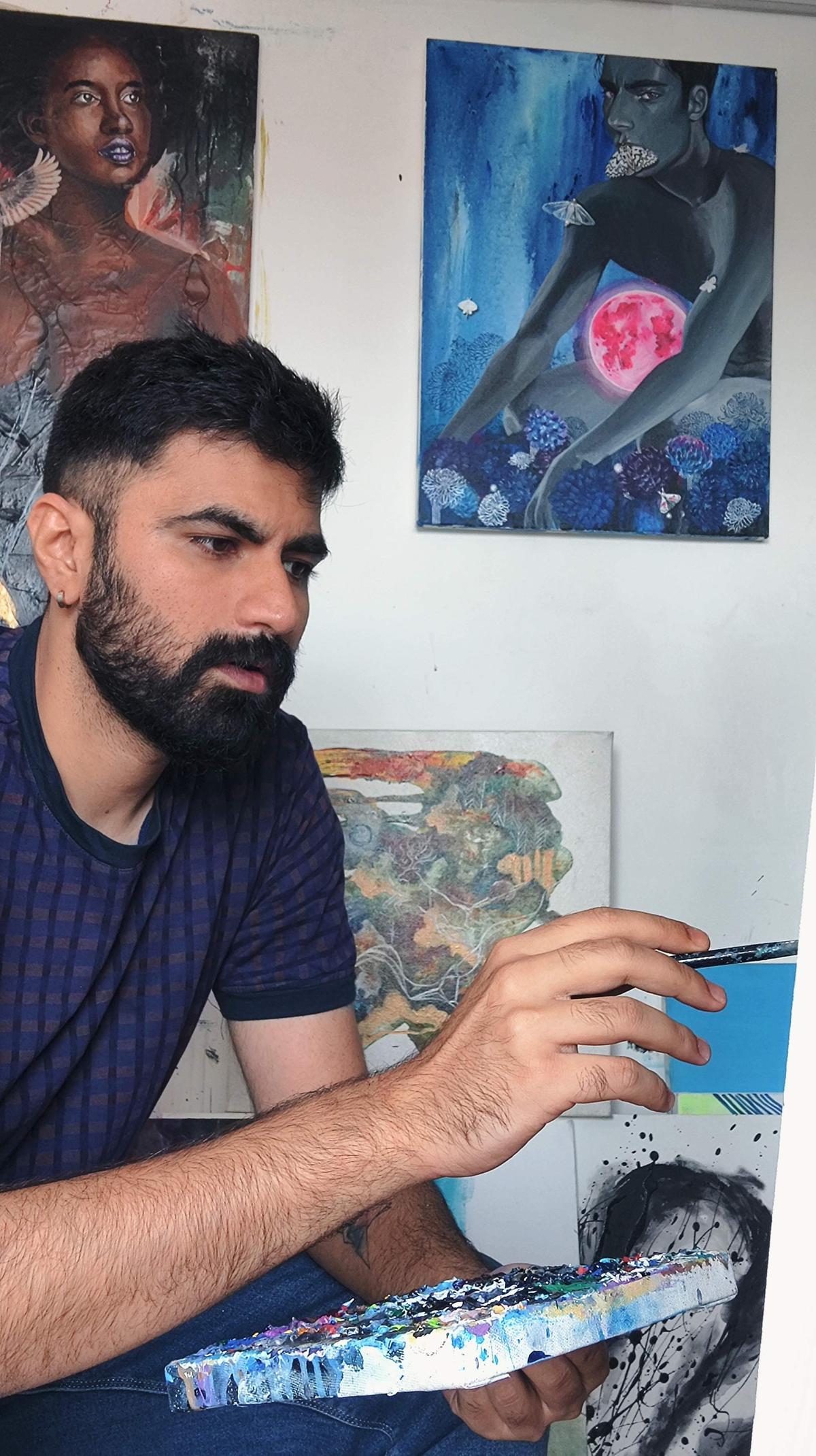
Aditya Raj
A lapsed lawyer, Raj frequented 4S, the dive bar in Defence Colony for years. It held a lot of memories, and that was one of the reasons why he sketched it when he started a ‘Delhi series’ in 2021, as part of Inktober (a worldwide art challenge). A print now hangs on the walls of the bar.
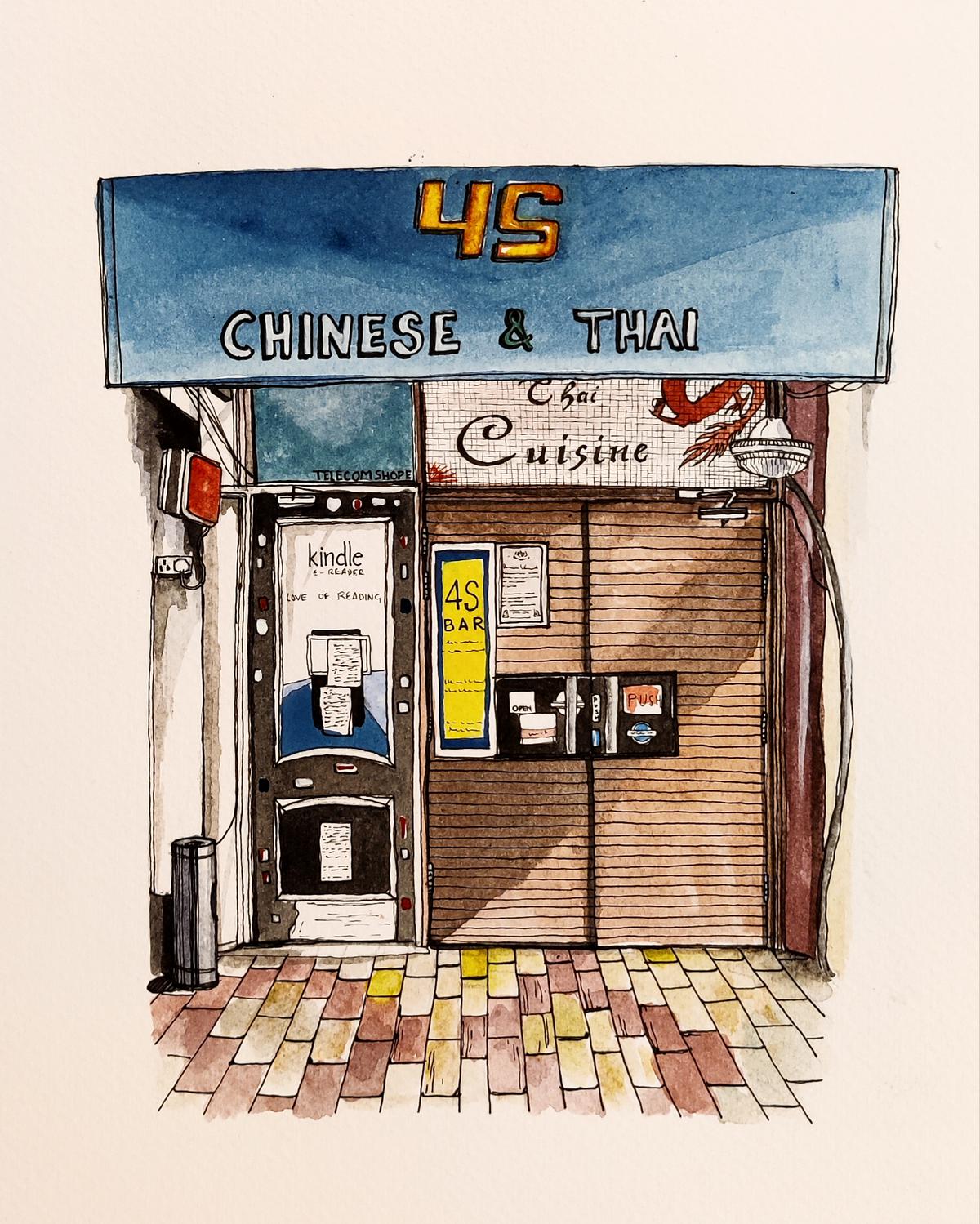
4S bar
“I’ve been in Delhi for more than a decade now, and my understanding of pretty much everything — my politics, my queerness — has come from it,” he says. “Often, when people think of the city, they think of the famous monuments; they don’t care about the everyday places. But that’s where the beauty is: in the eateries and book stores, the little signages and old posters.”
Raj has since painted Alka café, another queer-friendly establishment in Connaught Place, Jung Bahadur Kachori Wala in Chandni Chowk, Nirula’s restaurant, whose many branches are almost a historical landmark, and many more. But as he has been sketching, he has also seen them change. 4S has gotten bigger and more expensive; instead of regulars, the kachori wallas are now buzzing with Zomato and Swiggy boys waiting to take deliveries. “I realised that as I’m painting, I’m also archiving the city. Some things will change, others will vanish. So I’m glad I’ll have a memory of the way these places once were,” says Raj, who is planning on sketching his hometown, Jaipur, next. His prints sell for between ₹3,000 and ₹5,000, and his originals are priced upwards of ₹40,000.
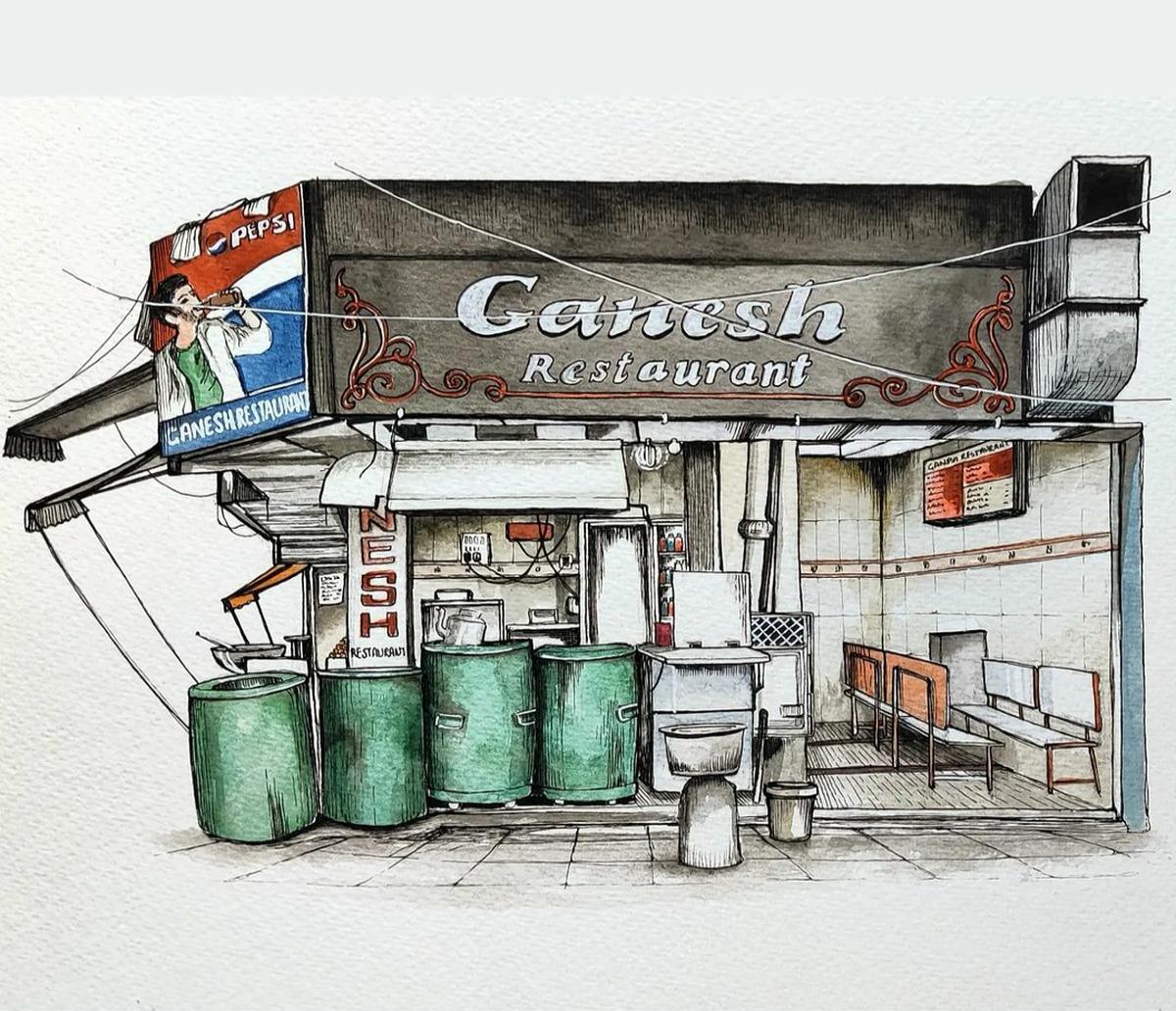
Ganesh Restaurant
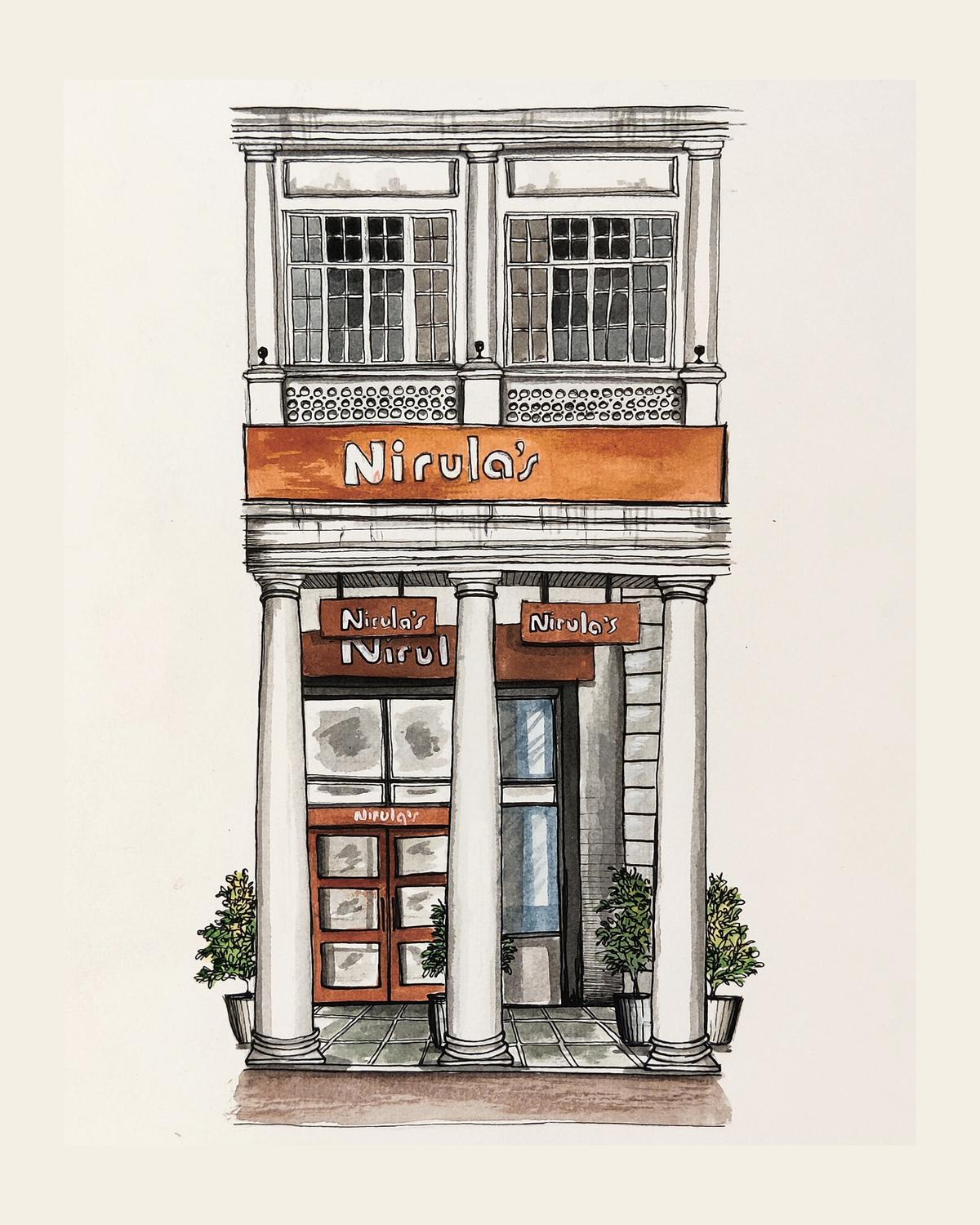
Nirula’s restaurant
His followers on Instagram often get in touch to tell him when a building has been torn down or if the food at a café is not what it used to be. Sometimes, they also offer up their own memories — like how Nirula’s used to serve free sundaes to school toppers. He gets suggestions for sketches, too. At such moments, the endeavour seems like a collaboration — a community effort to preserve the story of a city.
Vipin K.P., 35
@sketchplore, Kochi
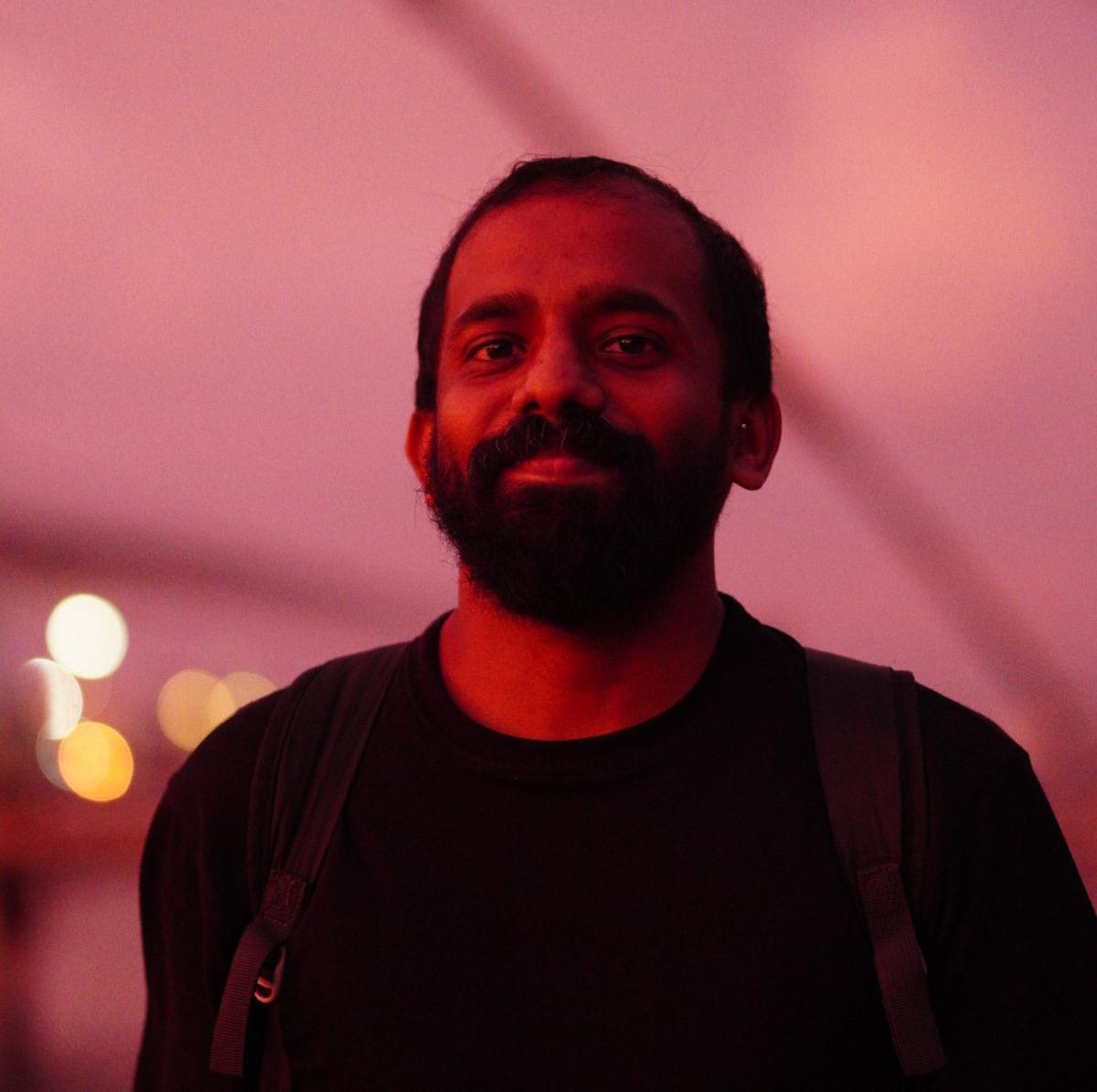
Vipin K.P.
“I cycle around the city in the mornings. If I see an interesting building, I make a mental note of the lighting, the colours and the feel I want to capture.” Over the years, Vipin’s sketched houses, cafés and old buildings in and around Fort Kochi, where he lives now, capturing its Dutch and Portuguese architecture. Café Teapot, with its quaint collection of old teapots and antiques is a favourite. He recalls sketching the Santo Gopalan Memorial Reading Room, once run by the Communist Party. But the building has since been demolished.
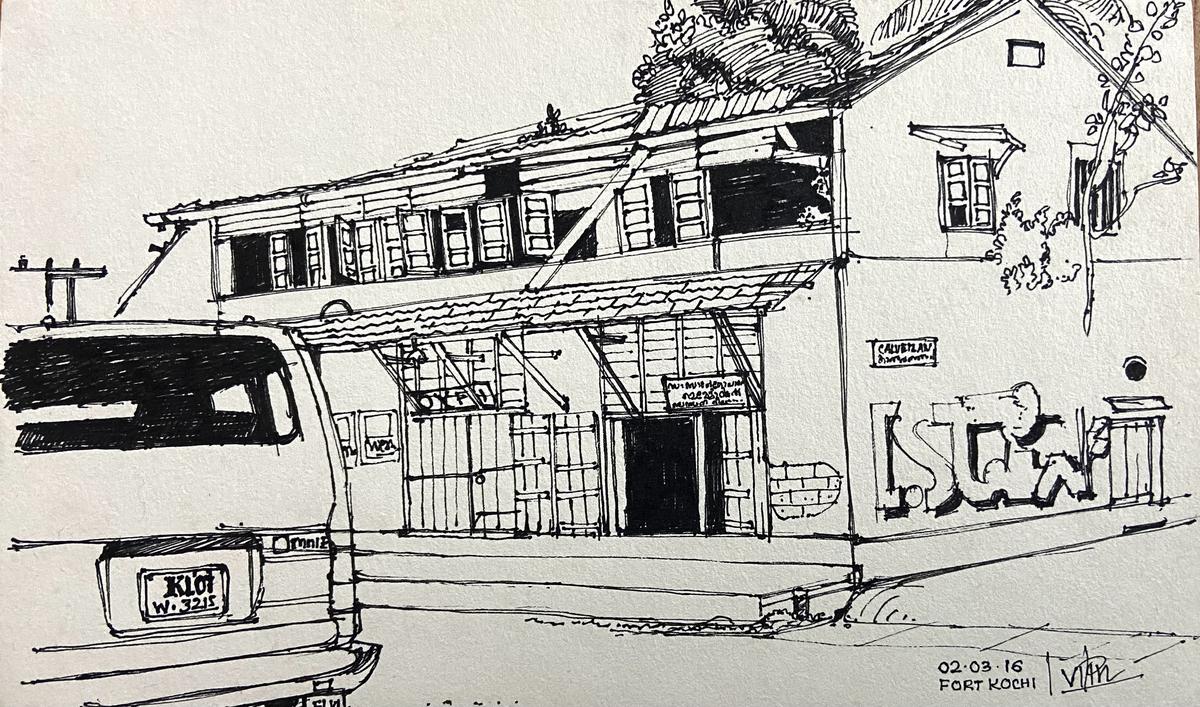
Santo Gopalan Memorial Reading Room
“People often send me recommendations on Instagram, pointing me in the direction of old buildings that only the locals know about. Sometimes, they also tell me stories about the buildings I draw. After I posted a sketch of Vasco House [now a homestay], a member of the family got in touch to reminisce about its early days,” he says.
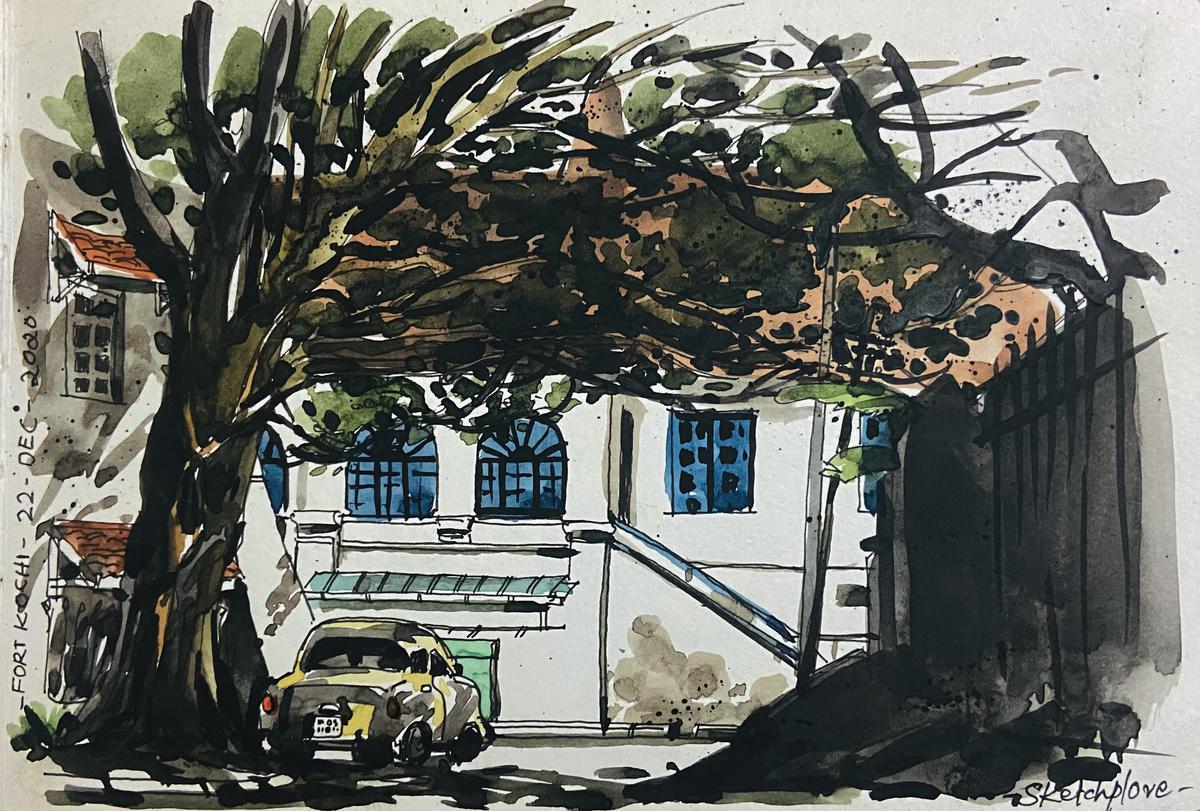
Vasco House
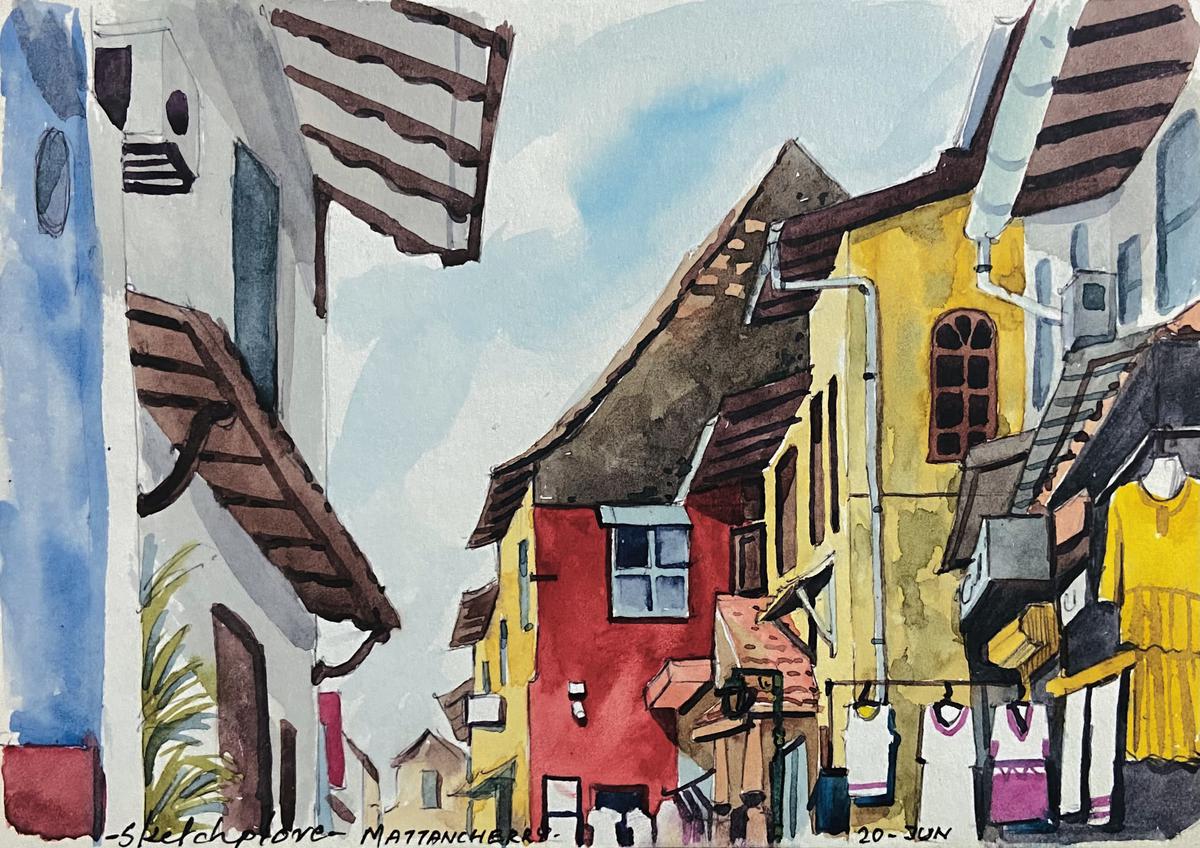
Streets of Mattancherry
For the fine arts diploma holder, his sketches are a means to delve into the city’s environs. “Fort Kochi wakes up with its fishermen. The scene slowly changes as people start filling the streets, going to work or school,” he says.
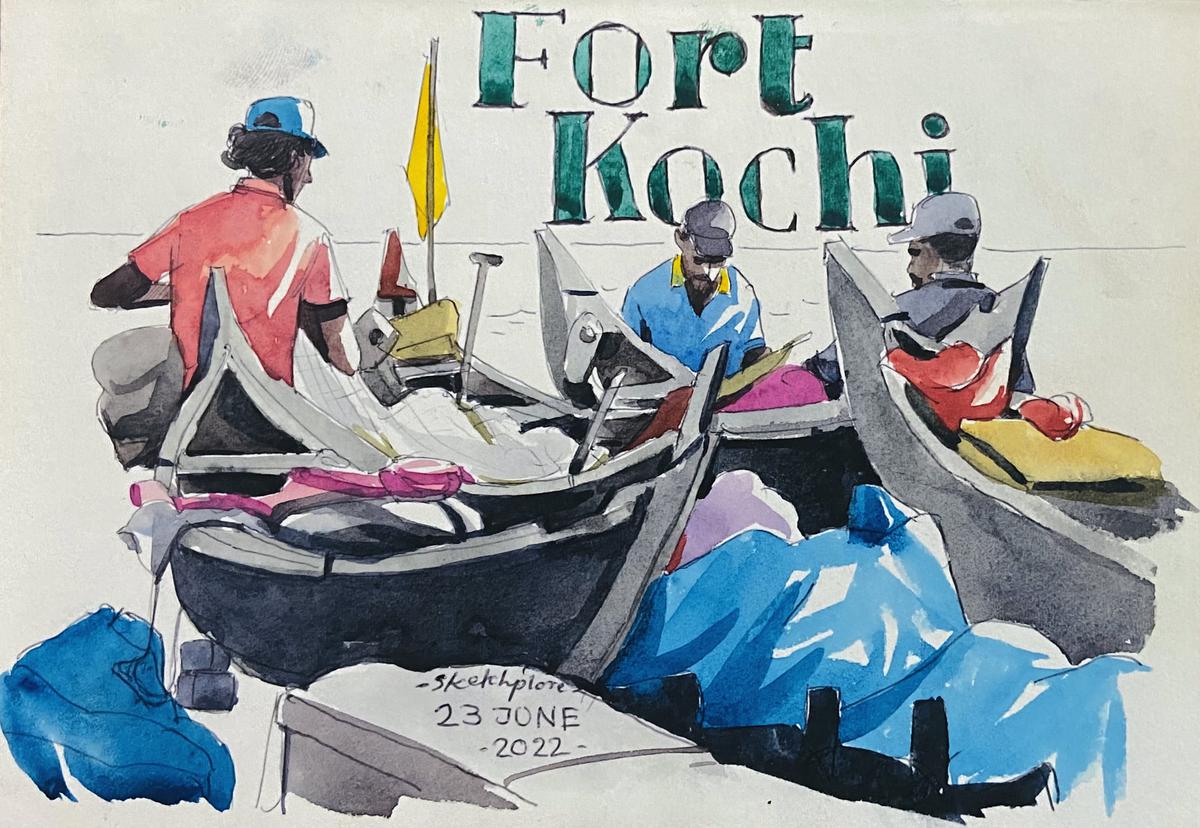
Forst Kochi’s fishermen
Its cafés have always been a draw because they are a calm oasis, with tourists and locals sipping their beverages or chatting over breakfast. Through his sketches, he’s documented not just the architecture, but also their lives — intertwined faith and cultures, all coming together in harmony. Recently, he brought out a selection of his Fort Kochi sketches as postcards (₹150 per card), and soon he plans to bring out a book of sketches, too.
Monali Haldipur, 47
@monali.haldipur, Pune-Kolkata
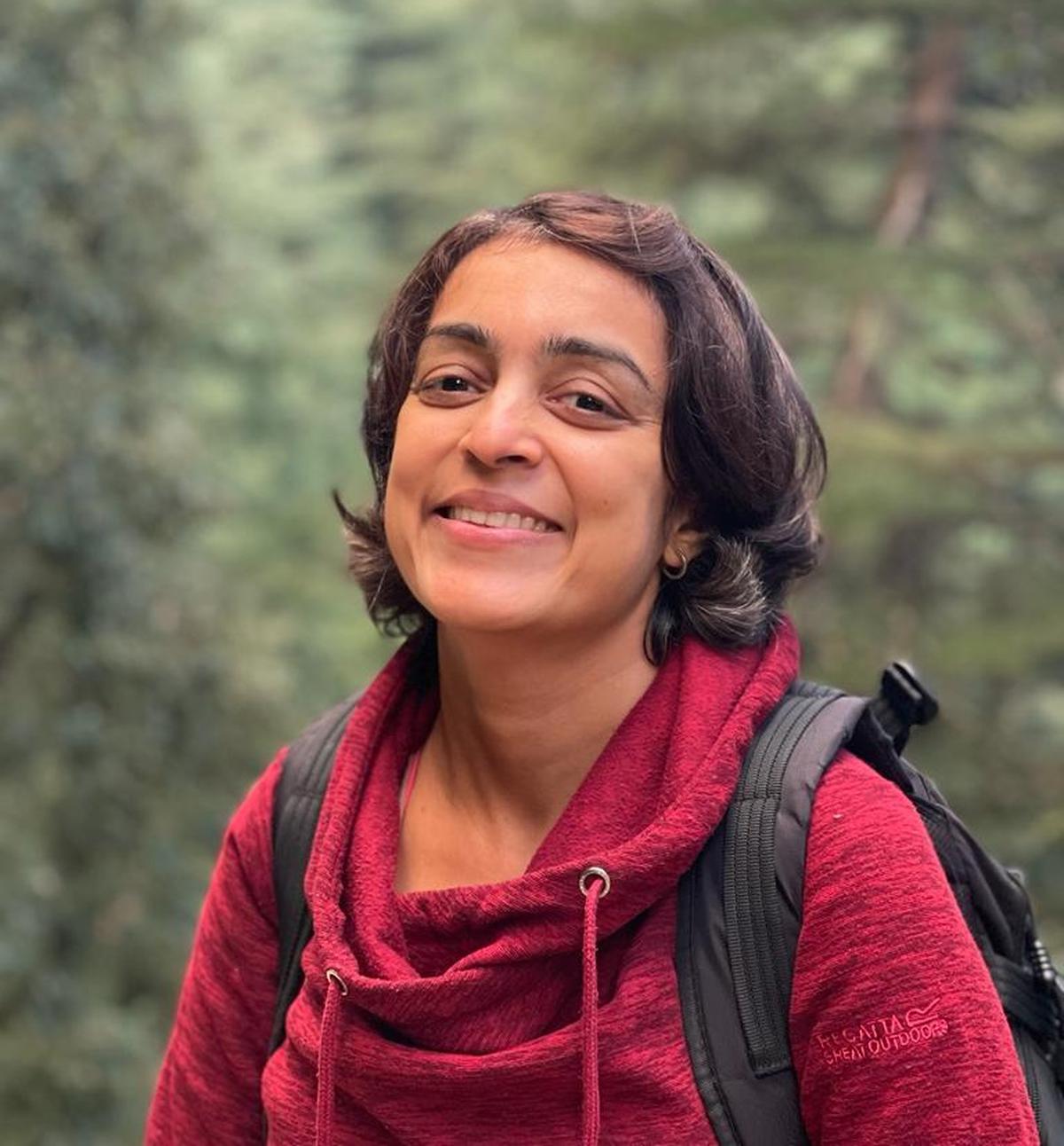
Monali Haldipur
Haldipur’s day job as a flight attendant involves extensive travel across the country. Since 2018, she spends hours of her free time at street corners, sketching and getting to know a new city. One of her recent series is Kolkata Diaries. “If you’re sketching on the street, you become a magnet. People are curious to know what you’re doing. They talk to you, ask questions, and sometimes, tell you stories that enrich your experience of documenting a place,” she says.
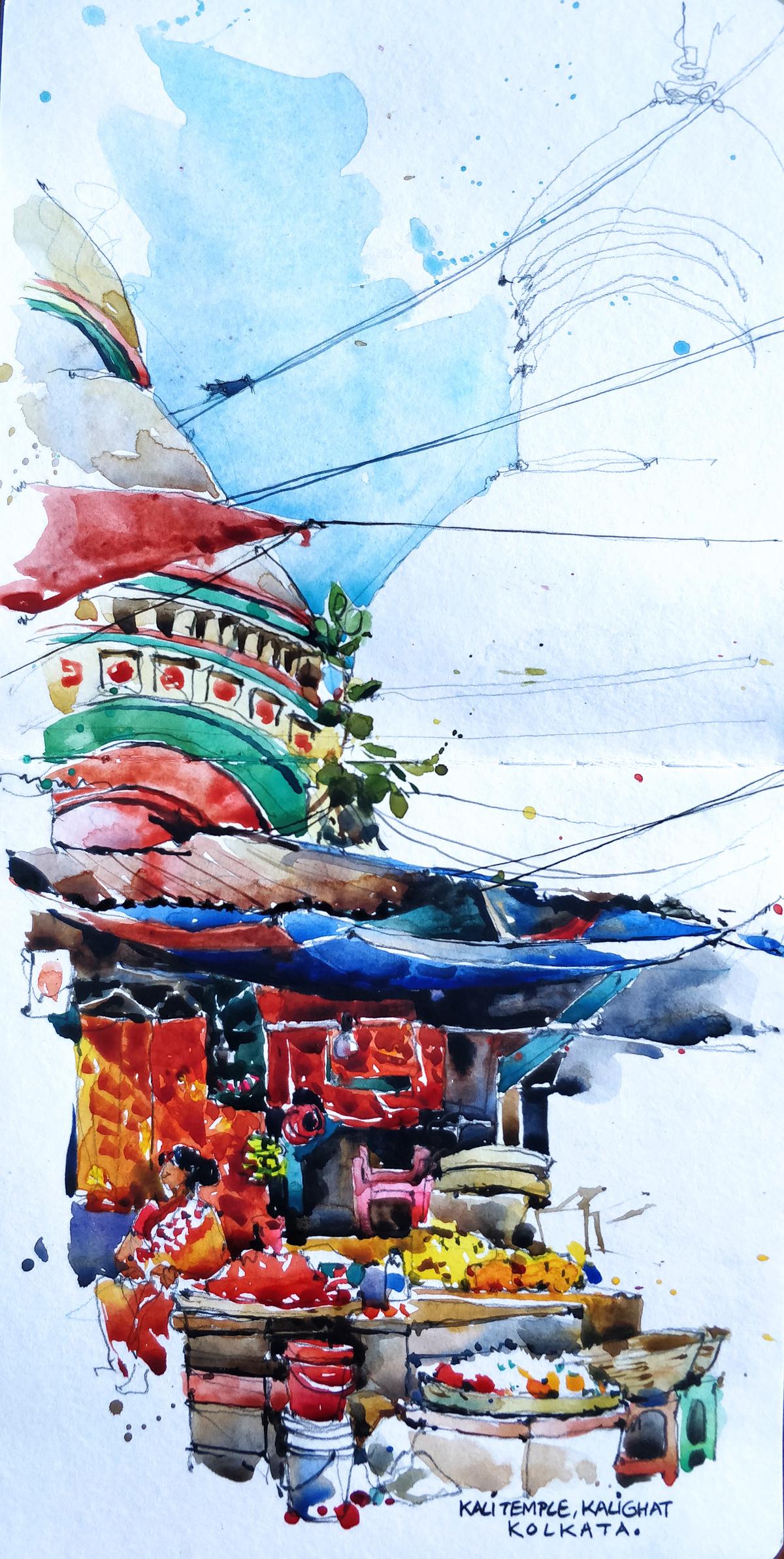
Kali Temple, Kalighat
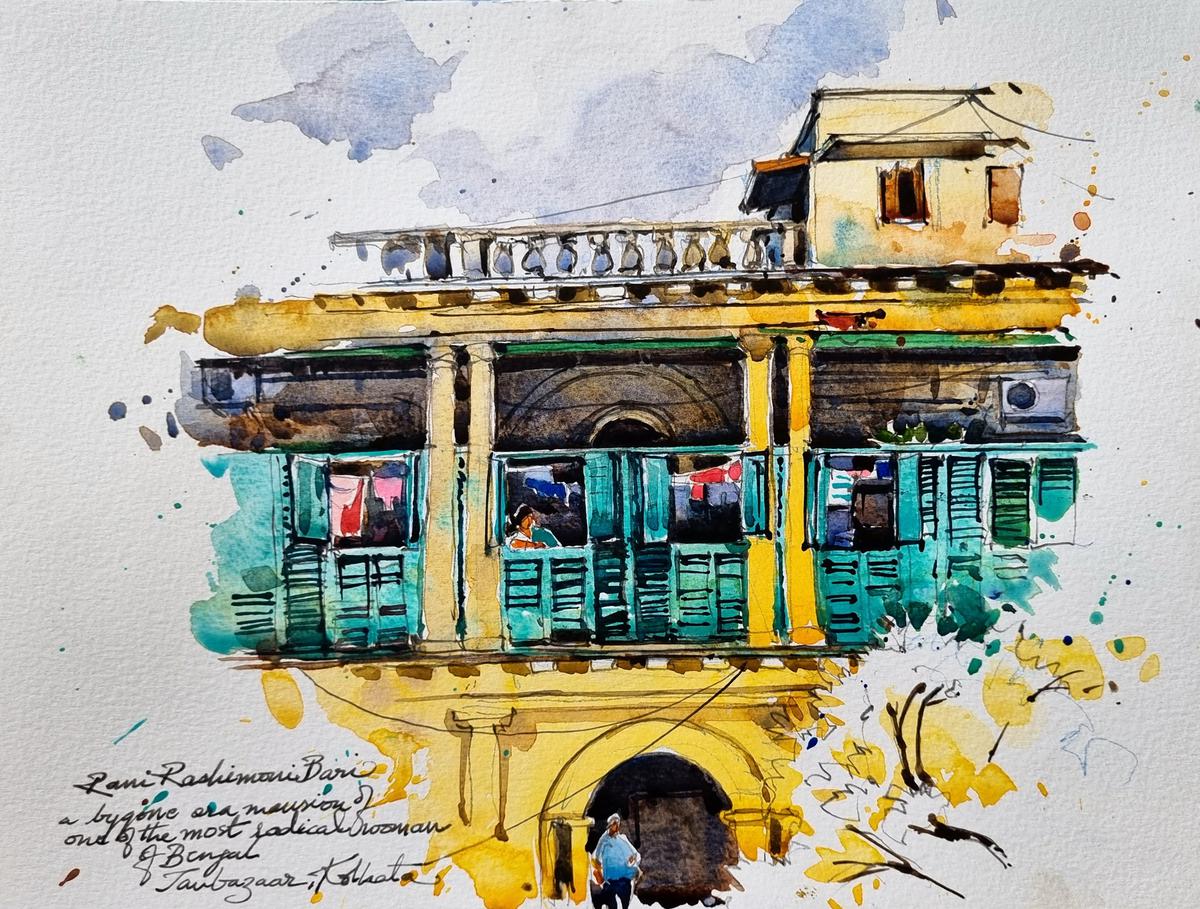
Rani Rashimoni Bari
Haldipur remembers when she was sketching the famous Kali temple in Kalighat, a woman selling flowers told her how the last few years had witnessed an increasing commercialisation of spirituality, with touts now hawking faster darshans and jumping queues for a price. Another time, she visited Choto Rash Bari temple in Tollygunge, but it was closed. A few locals suggested that she visit the nearby Baro Rash Bari, which turned out to be a set of 12 temples — also Grade-A heritage structures, but extremely dilapidated. “There are families who have been living inside them for the last three generations, and there are banyan trees that are growing over and through the temples.” She sketched what she could, all the while wondering if they would be there the next time she visited the city.
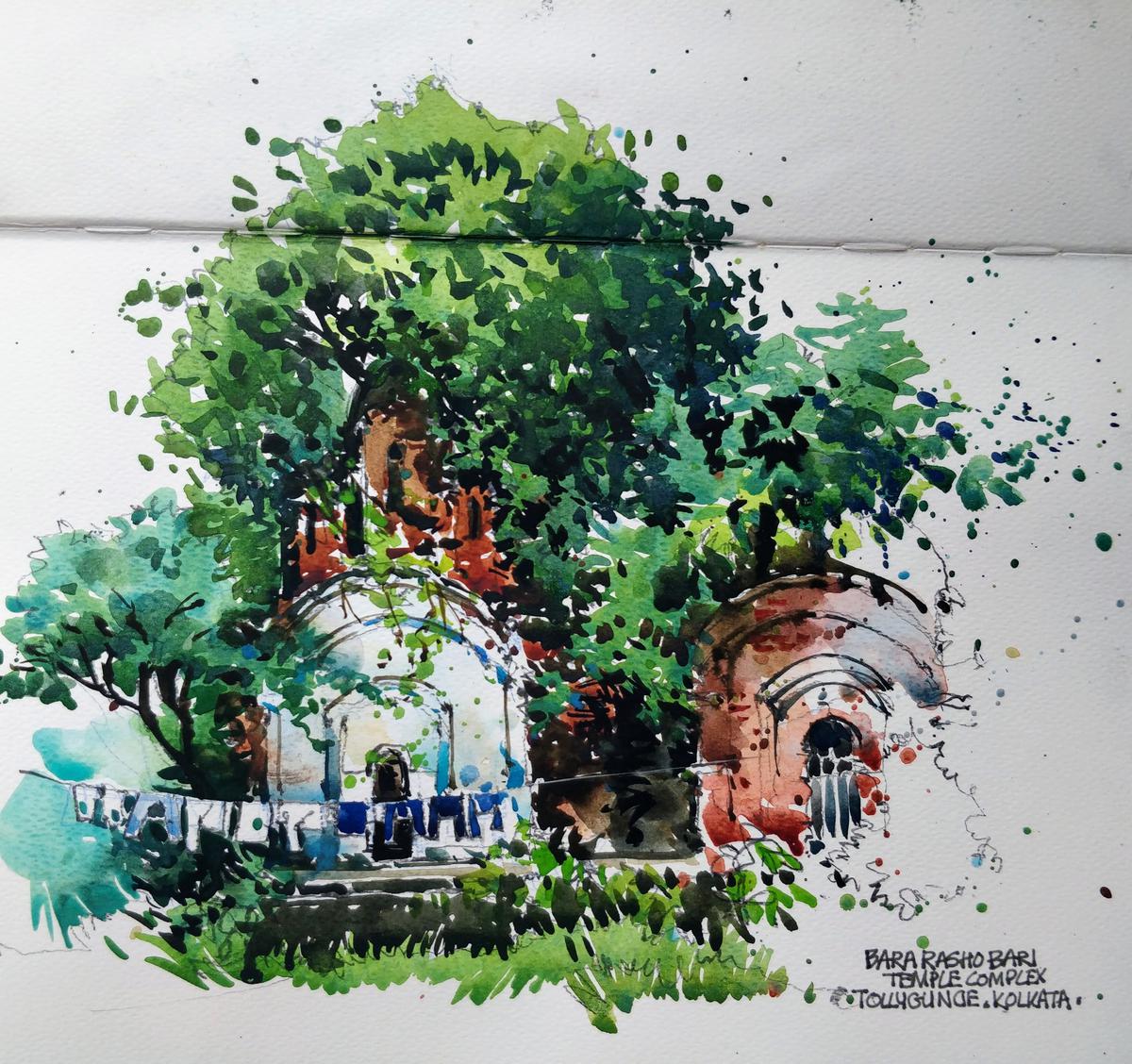
Baro Rash Bari temple
Originally from Pune, Haldipur has recorded the buildings and neighbourhoods at home too, such as Kasba Peth and Shaniwar Peth. The city has up to 17 different peths, or neighbourhoods, that go as far back as the 17th century, most set up by the Peshwas during Maratha rule. “I don’t know whether some of these places will be here the next time I come, so I sketch them,” she says. “I also like carrying these sketches with me when I travel because it’s like carrying a piece of home.”
Hari Das, 48
@knhdas, Chennai-Kochi
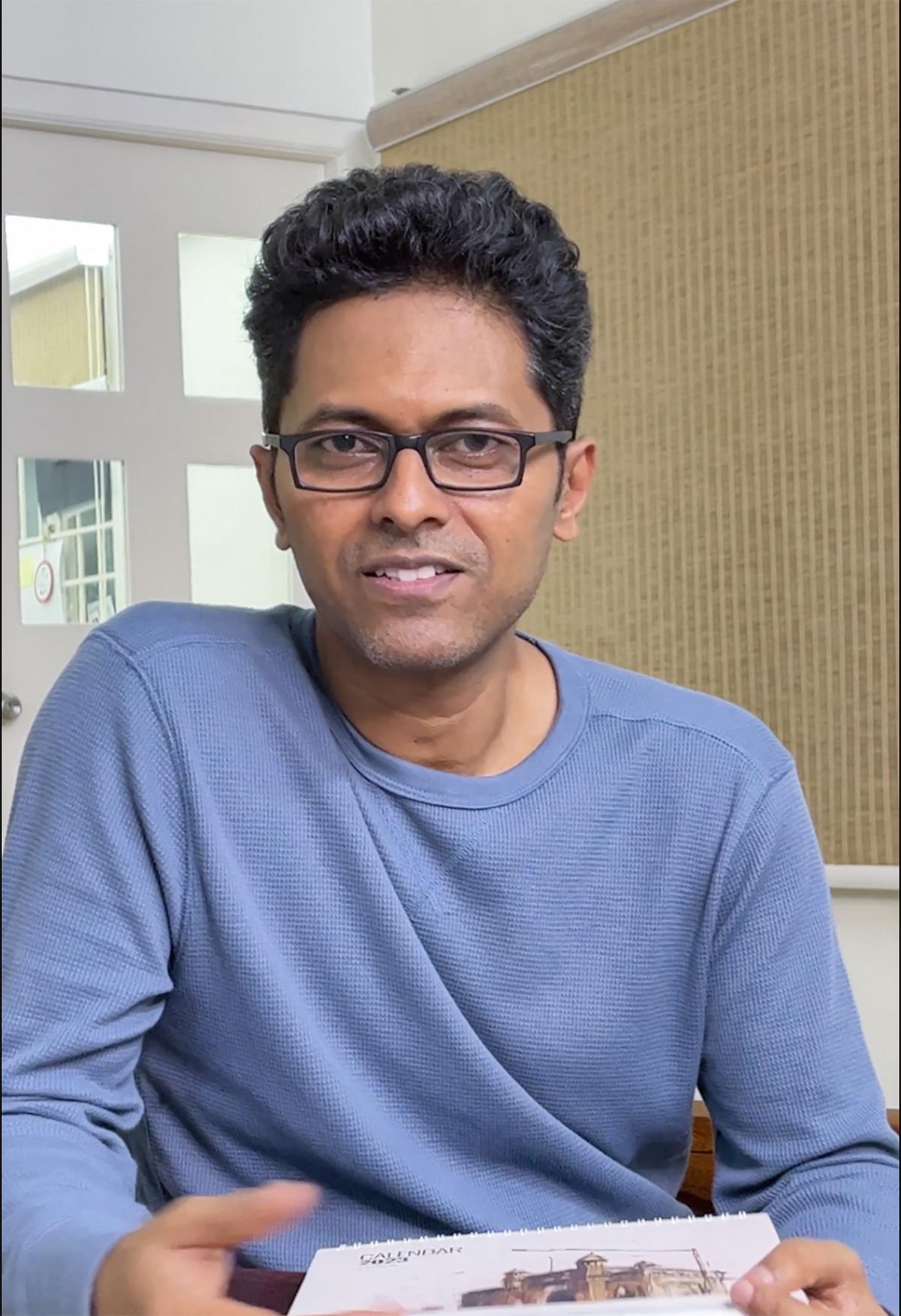
Hari Das
Das has always been fascinated by European and British architecture, and during his travels he would sketch what caught his eye: the Cathedral of Santa Maria del Fiore in Florence, quaint village huts in central Europe. Soon, he began noticing similarities in his own surroundings — be it Chennai’s Central Railway Station or the General Post Office, or the houses in Chettinad, with their unique gates and tiles.
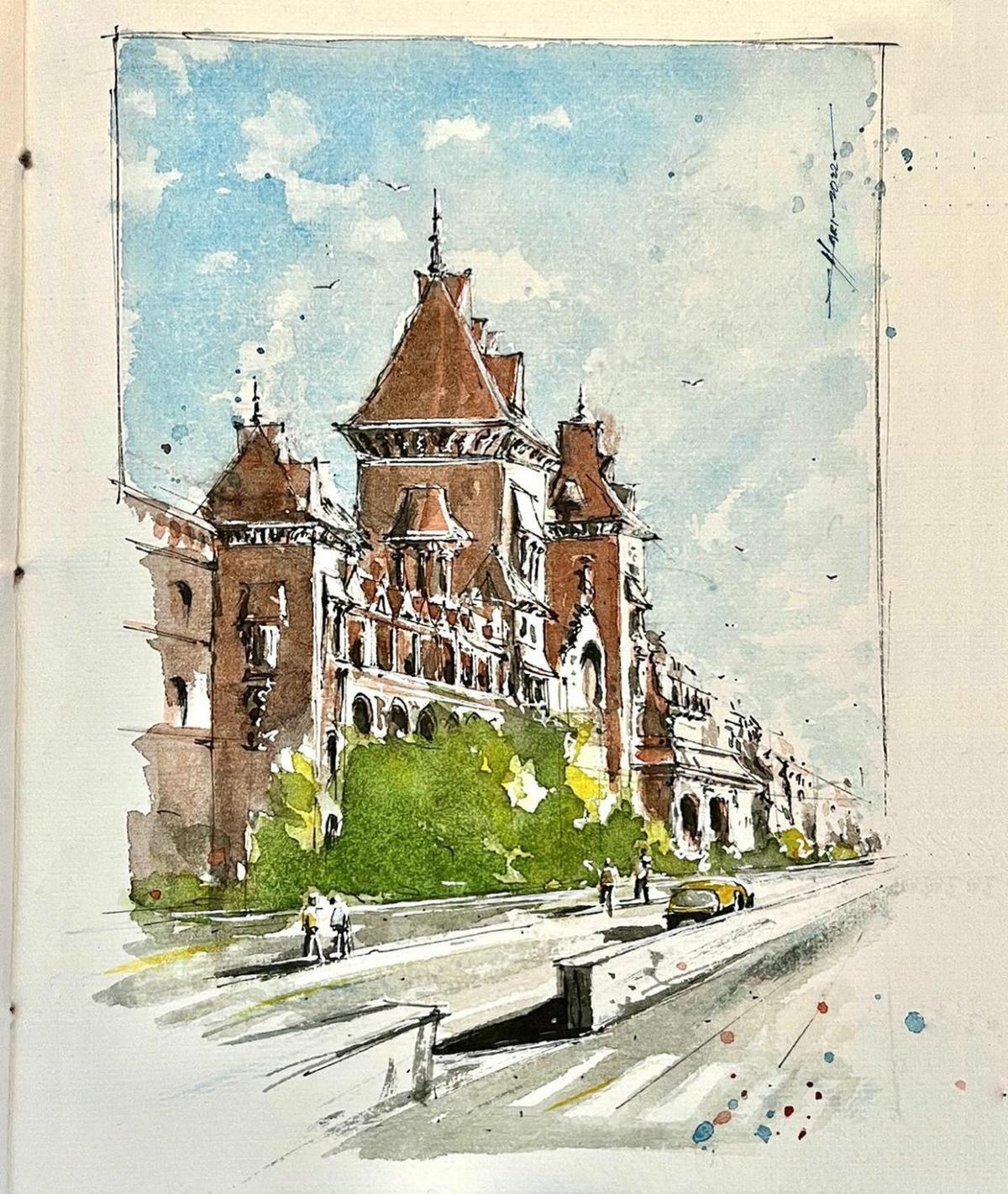
Chennai General Post Office
“Chettiars were traders, working between Europe and India. They brought back the architecture and designs [they saw abroad] and incorporated them here. It’s the perfect fusion of East and West,” says the Kochi-born, Chennai settled UIUX designer. He plans to sign up for heritage tours to learn more about the structures he’s sketching.
He took up his hobby seriously during the pandemic, and has since been documenting his city. Watercolours of Chennai’s Mylapore Temple and High Court, and Chettinad’s Mansion Gate have got hundreds of likes on social media, as have scenes from his hometown, such as Mattancherry’s narrow lanes and the Paradesi Synagogue in Fort Kochi.
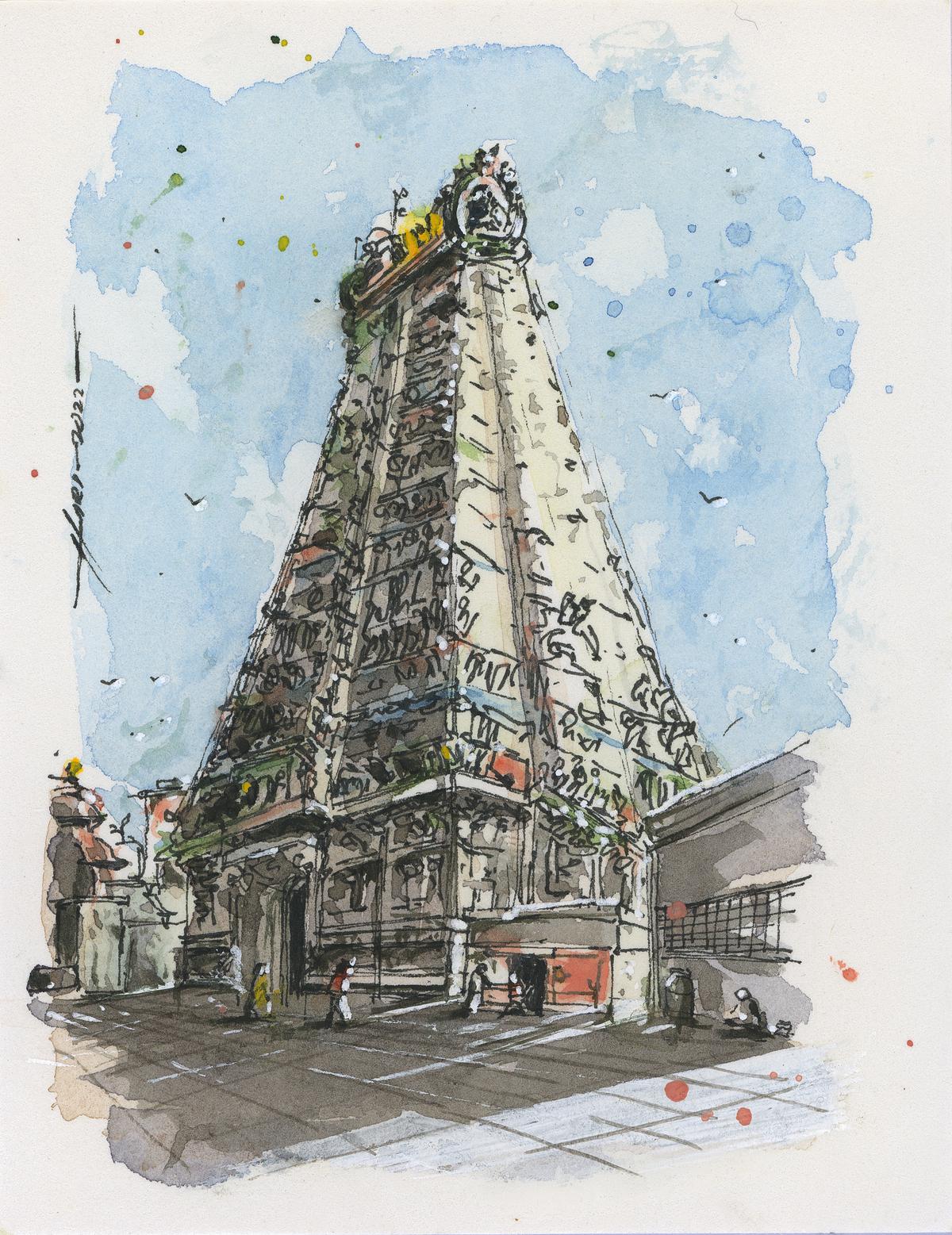
Mylapore Temple
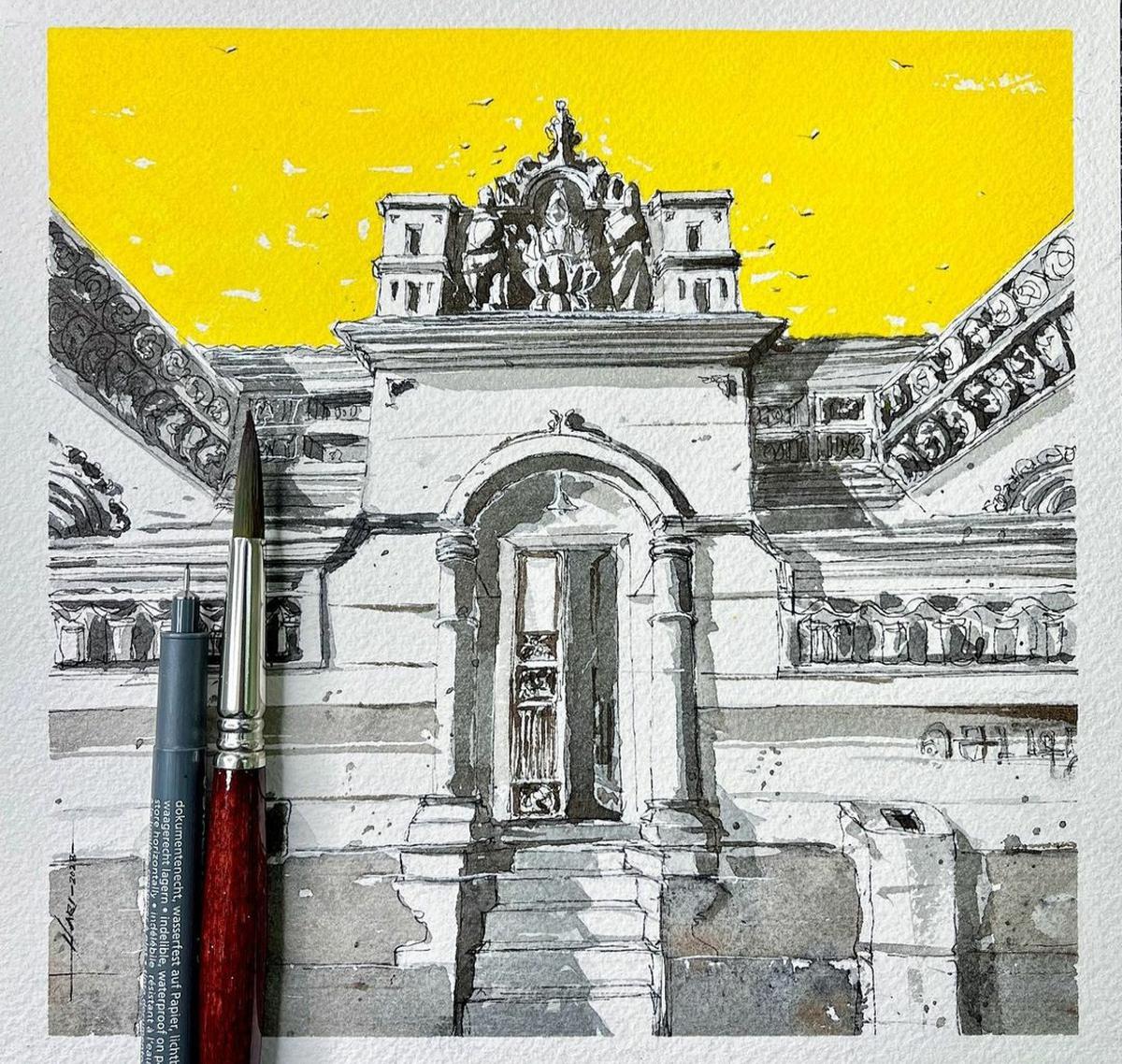
Chettinad’s Mansion Gate
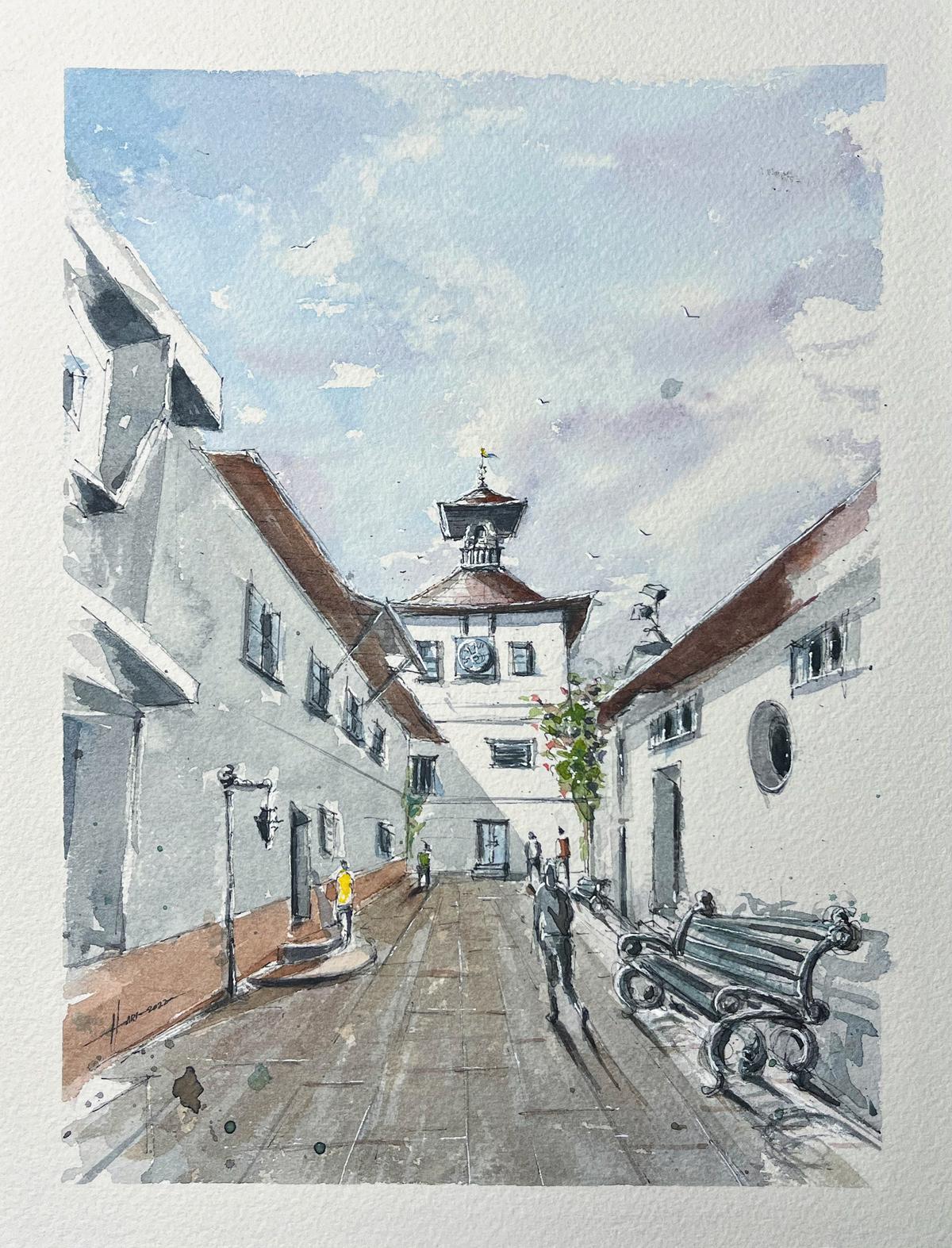
Paradesi Synagogue in Fort Kochi
A series on Tamil Nadu’s temples and Kerala’s landmarks is in the pipeline, starting with the Brihadeeshwara temple and the warehouses in Fort Kochi that have been converted into art museums.